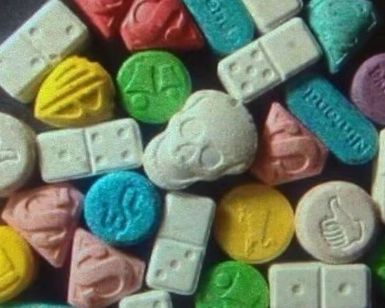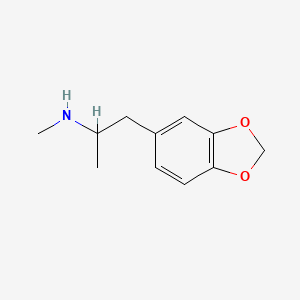|
Name: 3,4-Methylenedioxymethamphetamine
Type: Psychedelic amphetamine (MDMA/Ecstasy)
AKA: MDMA, Ecstasy, XTC

|
|
II. Natural Derivative
Synthetic substance, no natural derivative
 |
|
III. Chemical Profile (IUPAC name)

|
|
IV. History
3,4-Methylenedioxymethamphetamine (MDMA), commonly known as ecstasy, was first synthesized in 1912 by the pharmaceutical company Merck. Initially, it was not intended for human consumption. In the 1970s, MDMA gained popularity in psychotherapy for its ability to enhance communication and empathy. By the 1980s, it became a popular recreational drug, especially within the rave culture. Due to its psychoactive effects and potential for abuse, MDMA was classified as a Schedule I substance in many countries, although research continues into its therapeutic potential.

|
|
V. Legal Information
3,4-Methylenedioxymethamphetamine (MDMA) is classified as a Schedule I controlled substance under the US Controlled Substances Act and is similarly restricted under international drug control conventions. Initially popularized in the 1980s, its use led to significant regulatory actions due to concerns about its safety and potential for abuse. Despite its illegal status, there is a growing movement towards its legalization for therapeutic use in clinical settings, with ongoing research into its potential benefits and regulatory changes.
US Federal Schedule - I
Schedule I drugs, substances, or chemicals are defined as drugs with no currently accepted medical use and a high potential for abuse. Some examples of Schedule I drugs are: heroin, lysergic acid diethylamide (LSD), marijuana (cannabis), 3,4-methylenedioxymethamphetamine (ecstasy), methaqualone, and peyote.
Key US Federal Policies:
Controlled Substances Act. Public Law: Public Law 91-513 (text can be found on GovInfo) (https://www.dea.gov/drug-information/csa). Date enacted: October 27, 1970.
|
|
VI. Physical Effects
3,4-Methylenedioxymethamphetamine (MDMA), commonly known as ecstasy, is an empathogen and stimulant. As an upper, it enhances mood, increases heart rate, and dilates pupils. Short-term effects include euphoria and increased sociability, while long-term use can lead to neurotoxicity, memory impairment, and psychological issues. Overdose risks include hyperthermia and serotonin syndrome, which can be life-threatening. Safe use involves limiting dose and frequency, but regular use is discouraged due to potential long-term damage. Recent studies emphasize MDMA's potential therapeutic use in treating PTSD and anxiety under medical supervision.  |
|
VII. Psychological Effects
3,4-Methylenedioxymethamphetamine (MDMA), commonly known as ecstasy, affects serotonin systems in the brain, leading to enhanced mood, empathy, and sensory perception. Psychological effects last 3-6 hours, with potential long-term impacts including mood disorders and cognitive deficits with frequent use. Current research explores its therapeutic potential in treating PTSD and other mental health conditions.
 |
|
VIII. Culture
Commonly known as MDMA or ecstasy, this substance has a storied cultural impact, particularly in the context of the rave and electronic dance music (EDM) scenes. First synthesized in the early 20th century, it gained popularity in the 1980s and 1990s as a party drug due to its euphoric and empathetic effects. It has been both celebrated and vilified; proponents highlight its potential in psychotherapy, particularly for PTSD treatment, while opponents point to its potential for abuse and neurotoxicity. Cultural figures and events, from rave festivals to underground dance movements, have cemented MDMA's place in modern subcultures.
 |
